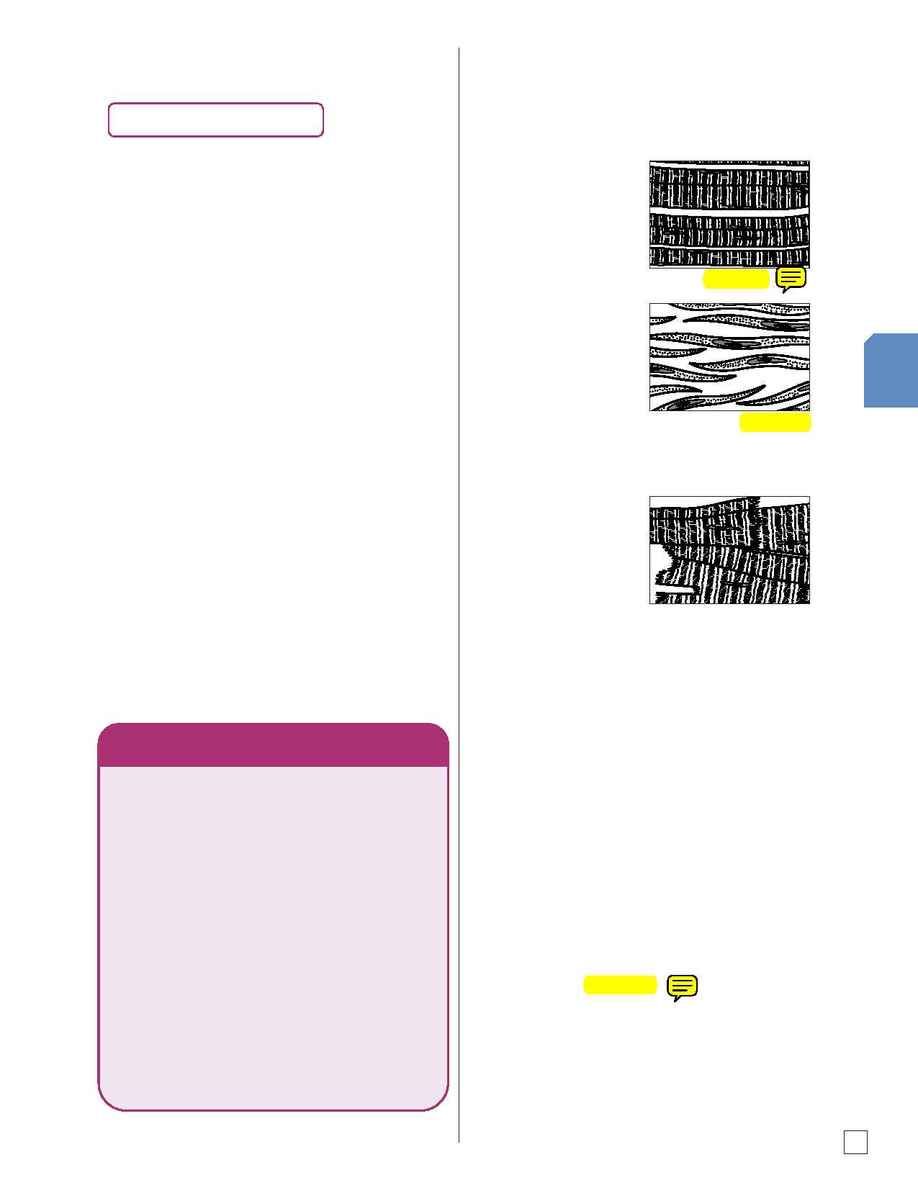
Salon Fundamentals
TM
Esthetics
a n a t o m y
143
5
The Muscular System
Between the bones and the skin lie the muscles.
Estheticians perform treatments to benefit the
skin. Often these treatments involve relaxing
or stimulating the muscles that lie beneath the
skin as well.
Myology (mi-OL-o-jee) is the study of the structure,
function and diseases of the muscles. There are
more than 500 large and small muscles in the
body, which account for approximately 40% of
the body's weight. Muscles are fibrous tissues
that contract or relax when stimulated by
messages carried by the nervous system, to
produce movement.
To understand the functions of the muscular
system, remember
MAPS
:
·
M
ovement
·
A
ttachment
·
P
rotection
·
S
hape
There are three types of muscle tissues:
1. The voluntary or
striated (STRI-at-ed)
muscles respond to
conscious commands.
2. The involuntary
or non-striated
muscles respond
automatically to
control various body
functions, including
the internal organs.
3. The cardiac (heart)
muscle is the muscle
of the heart itself
and the only muscle
of its type in the
human body. This
muscle functions
involuntarily.
Some muscles function both voluntarily and
involuntarily. For example, eye muscles respond
to a conscious command to blink, but they also
blink automatically to maintain eye moisture.
The esthetician is primarily concerned with
the voluntary muscles of the head, face,
neck, arms and hands.
Each muscle has three parts, as shown in the
illustration at the top of the next page.
Muscles produce movement through contraction
(tightening) and extension (relaxing). When a
contraction occurs, one of the muscle attachments
moves at the insertion point, while the other
remains fixed at the muscle's origin. All muscles
are attached at both ends either by bone or
Cardiac
Non-Striated (smooth)
Striated (striped)
VOCABULARY OF THE MUSCULAR SYSTEM
The following terms are used to describe a
muscle's function or location:
anterior
(an-TEER-ee-er)--in front
posterior
(pos-TEER-ee-er)--behind or in back
superioris (su-peer-ee-OR-es)--located above
or larger than
inferioris
(in-FEER-ee-or-es)--located below
or smaller than
levator
(le-VA-ter)--lifts up
depressor (de-PRES-er)--draws down
or depresses
dilator
(DI-la-ter)--opens, enlarges or expands
